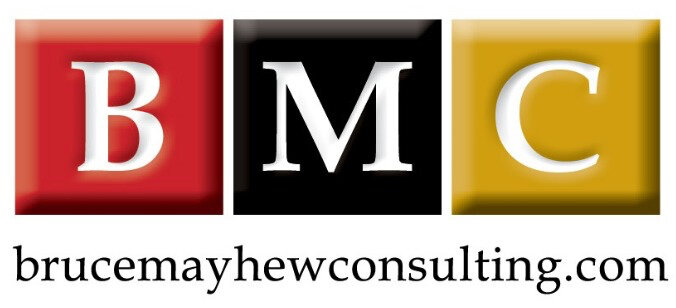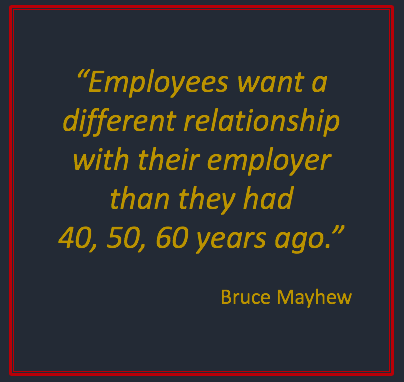Support Employee Engagement. It Doesn't Make Cents... It Makes Dollars.
/Sorry for the word play in the title. I couldn’t help it. But hopefully in increased your engagement.
For years Gallup research has shown us approximately 65% of employees are only moderately engaged and 15% of employees are fully disengaged. And unfortunately these engagement numbers are getting worse in many cases.
We know engaged employees are happier and enjoy their work. Engaged employees also have greater productivity, make fewer mistakes, have higher customer satisfaction rates and lower turnover… and those are only some of the most obvious benefits. Clearly, improving engagement of the 65% of your employees can have tremendous impact to your business. According to Neil Pasricha, entrepreneur and author of the best-selling ‘The Book of Awesome’ series and ‘The Happiness Equation’, happy and engaged people are:
Are 31% more productive
Reach 37% higher sales
Are 300% more creative than their peers
As Anne M. Mulcahy’s said years ago, “Employees are a company's greatest asset - they're your competitive advantage.”True then and still is.
To tap into this 65% of employees, organizations are embracing soft skills. Why? Because research is also showing us that 5 out of the top 7 Leadership Skills are soft skills. Simply put, traditional leadership approaches fail because employees want a different relationship than they had 40, 50, 60 years ago. Today, the organizations and leaders who are winning have learned to adapt.
As a leader you play an incredibly important role in shaping the culture of your team. You are going to make it, break it or leave it broken (if you inherited a team). Your teams’ results, attitude and loyalty will tell you exactly how well you are doing... you don't need an expensive Employee Survey to know how well you are doing.
Here are 3 ways leaders like you can begin to develop a strong corporate culture and your team.
1. Be Transparent
A transparent workplace breaks down silos and promotes open communication.
When workplaces are transparent, employees don’t have to wonder what’s important, everyone see the big picture and can see how their work is important to the greater good. Transparency also encourages employees to share their achievements and to seek out support when they don’t know something or need a creative boost… not to mention creating a safer more positive environment.
2. Set / Manage Expectations
When leaders treat employees like children, they often get demotivated employees. The reverse is also true.
If you want your employees to be empowered you have to let them know what you expect of them. And, they’ll want to know what they can expect from you because employee engagement is a two-way street. When you are clear about expectations you lay the foundation to build trust and a community. For example, imagine how excited your team will feel when you tell them your goal is to:
Help them contribute and reach their short and long-term goals
Give them the autonomy and to contribute in a meaningful way (how, when and what they work on)
Help them do work they can be proud of
Help them find work that is in-line with their professional goals (only 20% is necessary… but that’s for another another blog)
And equally important, you need to share you expect them to:
Be professional, proactive, creative, strategic and demonstrate organizational values
Reach their goals – as they’ve agreed to with you, on time and on budget
Provide you with accurate and timely updates
Come to you early with challenges and not to surprise you – be a coach / mentor to them
Great leaders realize change is everywhere and every project will have unique challenges. Great leaders coach their team to expect change, not fear it and to expect to work differently tomorrow than they did today.
3. Focus on Strengths
Fact! Everyone loves to feel pride when they know they are working at an expert level… even if they are introverts and don’t want public attention. Simply knowing you have an expertise evokes feelings that are inspiring and motivating. So, become the leader who helps everyone near you become an expert in an area that is in-line with their professional goals. You will begin seeing benefits like:
Increased performance
Increased creativity
Increased teamwork / collaboration… helping out
Decrease in errors
So, here is the thing. You can’t make someone an expert in something they don’t like doing. The simple answer is people become excellent when they are motivated by three things:
Tasks we enjoy spending time doing
Tasks we are good at
Tasks that give us strength – that empower our spirit
When you have identified the things that each employee enjoys doing, focus your and their effort on what they do exceptionally well. Why? Because while it’s important to always understand what doesn’t work so you don’t repeat it, spending time studying only failure sucks the joy out of the task and will never help us get so familiar with what does work.
Conclusion
Why does this positive approach work?
This works because employees who are engaged (involved in the goals, timing and decisions surrounding their work) are far more motivated to push toward their success and the success of the organization. Successful organizations give their employees the opportunity to feel what it’s like to have their voices heard and to know they contribute to the corporate strategy and success.
And don’t worry, it doesn’t take more time… you do have time for this. In fact, you will be spending more time on positive work yourself rather than trying to force, coerce or bribe people to do great work… or worse yet… having to do the work yourself. Also, you will spend less time holding interviews to fill vacant spots because your best talent just quit.
About Bruce and Bruce Mayhew Consulting.
Toronto corporate trainer Bruce Mayhew Consulting (BMC) creates customized professional development courses at our Canadian management central office in Toronto. We specialize in Leadership, Communication and other soft skills training solutions.
BMC helps your greatest assets think productive and be productive.
Bruce is an experienced motivational speaker in Toronto and has inspired audiences across Canada and within the USA and the UK. Bruce works hard to always make sure your training event, conference, retreat, or annual general meeting is a success.
If you would like to learn more about how you and your organization can benefit from our communication skills courses email us by clicking here or one call does it all at 416.617.0462.
Bruce Mayhew Consulting's most popular programs are Email Writing Training, Leadership & New Leadership Development, Difficult Conversations, Generational Differences / Millennials At Work, Time Management Training and more.




